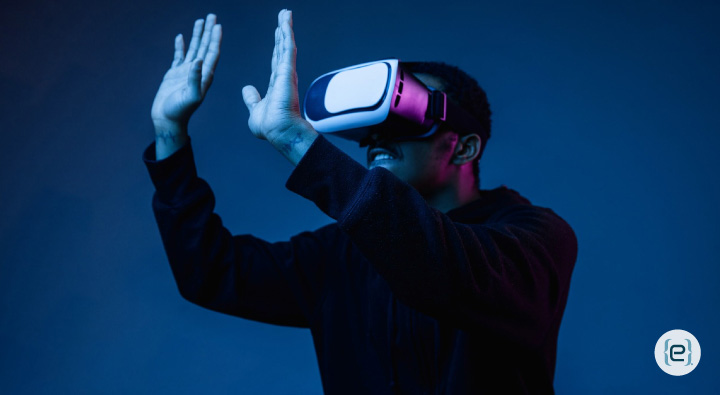Will Games Ever Feel Like Real Life? A Gamer’s Deep Dive


Last night, as I scaled a virtual mountain in the latest VR game, my cat jumped onto my lap and snapped me back to reality. That jarring moment sums up the current state of gaming: breathtakingly immersive, yet still unmistakably artificial. After 25 years of gaming and watching technology evolve, I can’t help but ask—will games ever truly feel like real life?
The Building Blocks of Realism: Where We Stand
To even approach real-life immersion, games need to master a daunting list of elements:
- Sensory feedback: Touch, temperature, and even pain simulation.
- Physical sensation: Realistic weight and balance in objects.
- Environmental interaction: Manipulating virtual objects with the same freedom as the real world.
- Emotional response: Genuine, deep feelings triggered by in-game events.
- Spatial awareness and movement precision: Navigating and interacting as naturally as you do in your living room.
- Haptic replication: Fine-tuned vibrations and resistance.
- Visual fidelity and audio accuracy: Graphics and sound that trick your senses.
- Neural engagement: Direct brain interfaces that blur the line between real and virtual.
Even with all this, there’s a gap that’s hard to close. I recently played a high-end racing simulator—custom wheel, force feedback, VR headset—the works. It cost more than my first car. And yet, it couldn’t deliver the g-forces, the subtle vibrations, or that gut-dropping sensation when you take a corner too fast. Technology can fake a lot, but some sensations remain elusive.
Perspective Shift: Every Generation’s “Peak Realism”
Remember those “realistic graphics” from the 90s? We thought blocky polygonal faces looked just like real people. Now, they’re laughably primitive. Each generation believes it’s reached the summit of realism, only for the next leap to make everything look dated. It’s a cycle that keeps us chasing the next big breakthrough.
Recently, I recreated my living room in VR, down to the last coffee table. After practicing, I tried navigating with my eyes closed. I still smacked into the real furniture. My brain just knew something was off. The uncanny valley is real—especially when it comes to movement and interaction.
The Uncanny Valley and the Problem of Weight
The uncanny valley is a stubborn hurdle. My nephew played a game with “photorealistic” characters. The graphics wowed us, but the movement was stiff—like watching lifelike marionettes. Our brains are wired to catch the slightest imperfection.
Weight simulation is another sticking point. I picked up a virtual sword in VR, then my actual sword collection (yes, I’m that kind of nerd). The difference is stark. No haptic system yet can replicate true weight and balance. Even the most advanced haptic feedback feels like a clever trick rather than reality.
The Psychology of Immersion: Why Our Brains Know
Even with flawless graphics and physics, your subconscious knows it’s not real. It’s like those dreams where you read a sentence, look away, and the text changes. The illusion breaks with the smallest inconsistency.
I tested a haptic suit that simulated rain, wind, and temperature. Mind-blowing, sure. But put your actual hand in cold water and the difference is instant. We’re still far from true sensory replication.
Sound, Smell, and Taste: The Forgotten Senses
3D audio setups can create convincing spatial sound, but close your eyes and you can still tell it’s artificial. Real sound has a complexity we haven’t cracked yet.
Smell and taste are even trickier. Scent generators for VR exist, but they’re not fooling anyone. At a tech conference, I tried a bacon scent after a forest demo—what I got was a weird camping breakfast gone wrong.
Movement and Emotion: The Final Frontiers
Omnidirectional treadmills are cool, but your body knows when you’re not really moving through space. Emotional immersion is powerful—games can make us laugh, cry, or rage. Yet, there’s always a layer of separation. You know, deep down, it’s not real.
Environmental interaction is another challenge. You can knock over virtual bottles, but try picking up sand and letting it run through your fingers. That level of detail is still science fiction.
Social Connection: The Missing Human Element
Even in the most advanced multiplayer VR games, something is missing from social interaction. Perfect avatar tracking can’t replace the invisible cues and chemistry of real human connection.
Looking forward, neural interfaces might get us closer. But will they ever replicate the full complexity of reality? Or will games evolve into something uniquely their own—less about copying life and more about creating new, authentic experiences?
Final Thoughts: Should We Chase Perfect Realism?
Will games ever be as real as reality? My gut says no—not in the way we imagine. And maybe that’s not the right goal. Games let us do the impossible, experience other worlds, and break free from the boundaries of everyday life. Chasing perfect realism might actually miss the point.
What matters more is creating experiences that feel authentic, not necessarily real. If you wanted perfect reality, you could just step outside and touch some grass. Games are special because they’re not real—they’re a different kind of magic.
But who knows? Maybe one day, you’ll boot up a game and truly can’t tell the difference. Until then, enjoy both the real and virtual for what they are—two unique experiences, each with their own kind of wonder.
Curious about how technology is shaping the future of immersion and interaction? Explore our insights on intelligent systems and cloud-driven innovation at eMazzanti. Ready to level up your IT experience? Contact us today to see how we can help bring your digital visions to life.
Recent Posts
Step Up Your Threat Response With Security Copilot
As we move deeper into 2025, you are probably focusing on ways to expand your…
Watch Out for the Cyber Security Menace
As we move deeper into 2025, you are probably focusing on ways to expand your…
The Rise of AI Agents: Simplifying Tasks and Connecting Technologies
Introducing eCare Bot: Your Intelligent IT Support Assistant In today's fast-paced world, the emergence of…
Server Simplified
At eMazzanti Technologies, we recognize that stable, effective, and expandable servers are essential to the seamless operation of enterprises. For this reason, we collaborate with Hewlett Packard Enterprise (HPE) to offer our clients the best server solutions possible, customized to meet their unique requirements. HPE servers provide the performance and flexibility required for small and big businesses to manage data, support apps, and manage workloads with ease. Customers may choose the best HPE servers for their organization with the assistance of our team of specialists. We take the time to comprehend the particular needs of every client, including those related to processing speed, storage capacity, and security features. Whether our clients require a general-purpose ProLiant server or a…
How to Make Your AI Copy Sound Authentic: Writing Like a Human, Not a Machine
AI writing tools have become popular for creating content quickly. But many readers can spot…
Data Analytics for Old-School Business Owners: Turning Dusty Ledgers into Gold Mines
Data analytics is changing the game for businesses of all types, including old-school industries that…


